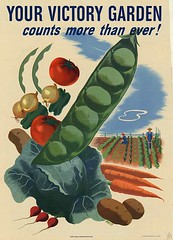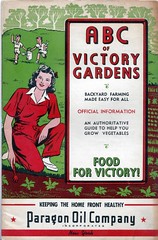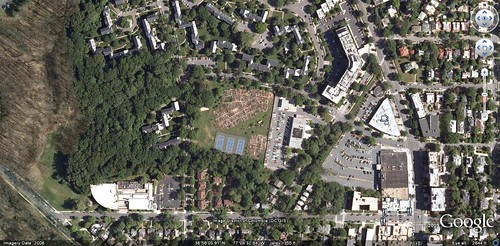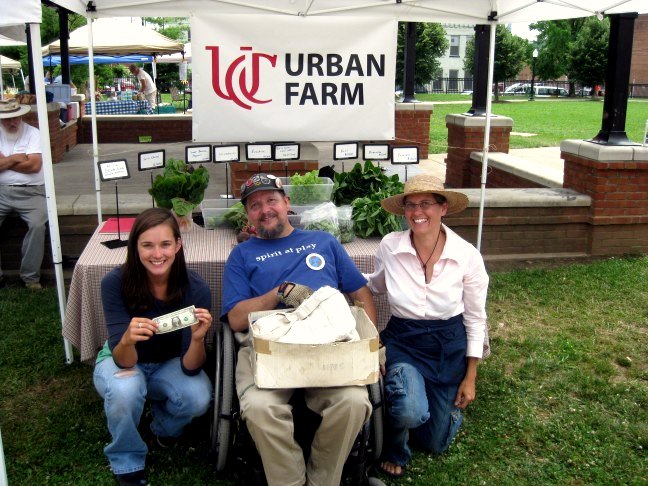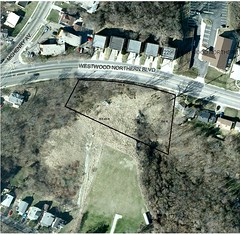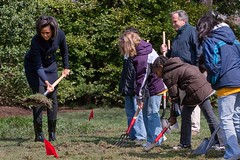City gardens that respect the urban fabric

Posted July 15, 2009 at 1:37PM
A couple of weeks ago, I voiced some reservations I have about proposals to revert large, mostly abandoned sections of inner cities to agriculture. I clearly stepped on some sensitive toes with that post but, without rehashing the issues, my concerns haven't gone away.
This does not mean, however, that I don't like community gardens when they fit well into cities. On the contrary. Some of my favorites, for example, are "victory gardens" (see vintage posters above) that were promoted to help America deal with food shortages during the World Wars of the 20th century, when much of the country's industrial and agricultural effort was being directed to support the military and there was also a shortage of farm workers because so many of them were serving their country abroad. This was back when people on the home front actually had to pitch in to sacrifice and assist a war effort. Imagine.
The good news is that some of these gardens survive today inside our cities, generally on parcels of government-owned land, where residents are allowed to lease and cultivate plots within them. Here are some within walking distance of my house:
To the right (east), by the way, is the neighborhood's police station. To the left (west) are apartment buildings. If we zoom out a bit we can see the larger neighborhood context:
Look a little farther to the east and you will see a commercial corridor running north-south, with 1920s-era single-family homes to the east of the corridor (Wisconsin Avenue, for the locals). Farther to the west is the wooded Glover-Archbold Park. The garden plots are in great demand and must be reserved far in advance. Go here and you can see another set of DC's victory gardens, between a large condo building and another park.
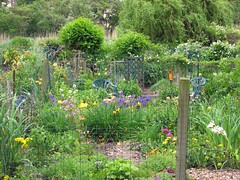 Another well-known set of victory gardens - see photo - is located near Boston's Fenway Park (where the Sawx play) and affectionately known to locals as "the Fens." Wikipedia reports that victory gardens produced up to 40 percent of all the vegetable produce being consumed nationally during World War Two. It was emphasized to home front urbanites and suburbanites that the produce from their gardens would help to lower the price of vegetables needed by the US War Department to feed the troops, thus saving money that could be spent elsewhere on the military: "Our food is fighting," one poster read.
Another well-known set of victory gardens - see photo - is located near Boston's Fenway Park (where the Sawx play) and affectionately known to locals as "the Fens." Wikipedia reports that victory gardens produced up to 40 percent of all the vegetable produce being consumed nationally during World War Two. It was emphasized to home front urbanites and suburbanites that the produce from their gardens would help to lower the price of vegetables needed by the US War Department to feed the troops, thus saving money that could be spent elsewhere on the military: "Our food is fighting," one poster read.
Another example of a city garden - not exactly a victory garden - that has a lot of promise is the University of Cincinnati's 1.24-acre urban farm, located on a parcel of municipal land in the northwest of the city. Note that the setting is less urban than the ones in DC, although the overall parcel size may be similar. (I'm not sure that I would want to go much larger, given the need to create and maintain city densities.)
When I visited UC's Sustainable Urban Environment program a couple of months ago, everybody was definitely jazzed about the garden, and several on the faculty (of the engineering school, mind you) were looking forward to going over and working in the garden the day after I left. In one of the photos above, three of the UC gardeners are proudly displaying some of their harvest at the Northside farmers' market. Debbie Moll, one of my hosts when I was there, is in the hat on the right. Check out the farm's own blog.
Perhaps the country's most famous urban farm, though, is the one started by Michelle Obama on the South Lawn of the White House. Click on the site plan and you will see the location of patches for spinach, broccoli, lettuce, shell peas, herbs, and the like, as well as flowers. They eat some of what they grow in the executive mansion, and also donate some of their harvest to a local kitchen for the homeless.
